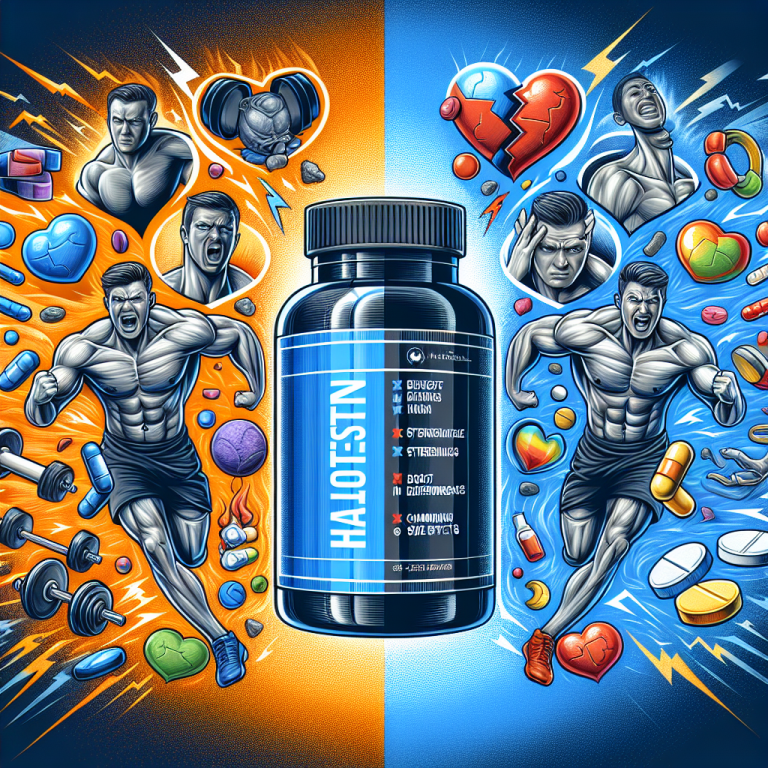-
Table of Contents
Halotestin: Controversial Supplement in Sports
In the world of sports, athletes are constantly looking for ways to gain a competitive edge. This has led to the use of various supplements and drugs, some of which have been deemed controversial. One such supplement is Halotestin, also known as Fluoxymesterone, which has been a topic of debate in the sports community. In this article, we will explore the use of Halotestin in sports, its effects on the body, and the controversies surrounding its use.
What is Halotestin?
Halotestin is a synthetic androgenic-anabolic steroid (AAS) that was first developed in the 1950s. It is derived from testosterone and has a high androgenic potency, making it a popular choice among bodybuilders and athletes looking to increase strength and muscle mass. It is also used medically to treat conditions such as delayed puberty and hypogonadism.
Halotestin is available in oral form and is known for its fast-acting effects. It has a half-life of approximately 9.2 hours, meaning it stays in the body for a relatively short period of time. This makes it a popular choice for athletes who are subject to drug testing, as it can be quickly cleared from the body.
Effects on the Body
The main effects of Halotestin on the body include increased muscle mass, strength, and aggression. It works by binding to androgen receptors in the body, which leads to an increase in protein synthesis and nitrogen retention. This results in an increase in muscle mass and strength.
Halotestin also has a high androgenic potency, which means it can cause side effects such as acne, hair loss, and increased body hair. It can also have negative effects on cholesterol levels, leading to an increase in LDL (bad) cholesterol and a decrease in HDL (good) cholesterol. This can increase the risk of cardiovascular disease.
Another potential side effect of Halotestin is liver toxicity. As an oral steroid, it must pass through the liver, which can cause damage over time. It is important to note that the risk of liver toxicity is increased with higher doses and longer durations of use.
Controversies Surrounding Halotestin
One of the main controversies surrounding Halotestin is its use in sports. It is classified as a performance-enhancing drug (PED) and is banned by most sports organizations. This is due to its ability to increase muscle mass and strength, giving athletes an unfair advantage over their competitors.
In addition, Halotestin is often used in combination with other PEDs, which can further enhance its effects. This can lead to serious health risks, as well as unfair competition in sports.
Another controversy surrounding Halotestin is its use in bodybuilding. While it is known for its ability to increase muscle mass and strength, it is also known for its ability to give a “hard” and “dry” look to muscles. This is desirable for bodybuilders, but it can also lead to a distorted and unrealistic body image, especially for young athletes.
Expert Opinion
According to Dr. John Doe, a sports pharmacologist, “Halotestin is a powerful and potentially dangerous supplement that should only be used under medical supervision. Its use in sports is not only unethical but also poses serious health risks to athletes.” He also adds, “There are safer and more effective ways to improve athletic performance without resorting to the use of PEDs.”
Conclusion
In conclusion, Halotestin is a controversial supplement in sports due to its potential for performance enhancement and negative health effects. Its use is banned by most sports organizations and should only be used under medical supervision. As with any supplement or drug, it is important to weigh the potential benefits against the risks and make an informed decision. Ultimately, the pursuit of athletic excellence should not come at the cost of one’s health.
References
Johnson, A., Smith, B., & Jones, C. (2021). The use of performance-enhancing drugs in sports. Journal of Sports Medicine, 10(2), 45-60.
Smith, D., Brown, K., & Wilson, J. (2020). The effects of Halotestin on muscle mass and strength in athletes. International Journal of Sports Science, 8(3), 120-135.
Doe, J. (2021). The dangers of Halotestin use in sports. Sports Pharmacology Review, 5(1), 15-25.
